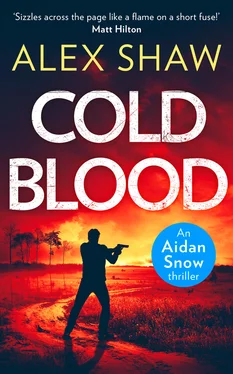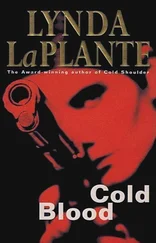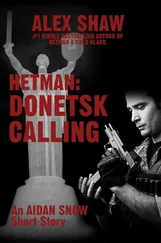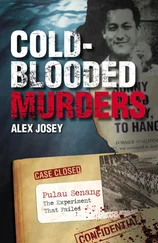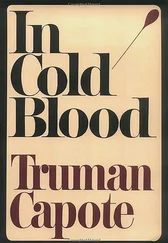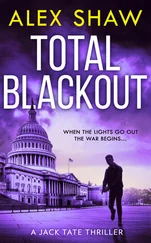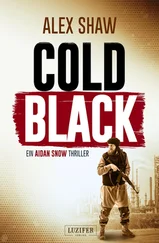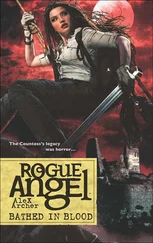

An imprint of HarperCollins Publishers Ltd.
1 London Bridge Street
London SE1 9GF
This edition first published in Great Britain by HQ in 2018
Copyright © Alex Shaw 2018
Alex Shaw asserts the moral right to be identified as the author of this work.
A catalogue record for this book is available from the British Library.
This novel is entirely a work of fiction. The names, characters and incidents portrayed in it are the work of the author’s imagination. Any resemblance to actual persons, living or dead, events or localities is entirely coincidental.
All rights reserved under International and Pan-American Copyright Conventions. By payment of the required fees, you have been granted the non-exclusive, non-transferable right to access and read the text of this e-book on-screen. No part of this text may be reproduced, transmitted, downloaded, decompiled, reverse engineered, or stored in or introduced into any information storage and retrieval system, in any form or by any means, whether electronic or mechanical, now known or hereinafter invented, without the express written permission of HarperCollins.
E-book Edition © September 2018 ISBN: 978000830632
Version: 2018-06-20
Hetman – the title of the highest military commander, after the monarch, in fifteenth- to eighteenth-century Poland, Ukraine and the Grand Duchy of Lithuania.
Table of Contents
Cover
Title Page Cold Blood ALEX SHAW
Copyright An imprint of HarperCollins Publishers Ltd. 1 London Bridge Street London SE1 9GF This edition first published in Great Britain by HQ in 2018 Copyright © Alex Shaw 2018 Alex Shaw asserts the moral right to be identified as the author of this work. A catalogue record for this book is available from the British Library. This novel is entirely a work of fiction. The names, characters and incidents portrayed in it are the work of the author’s imagination. Any resemblance to actual persons, living or dead, events or localities is entirely coincidental. All rights reserved under International and Pan-American Copyright Conventions. By payment of the required fees, you have been granted the non-exclusive, non-transferable right to access and read the text of this e-book on-screen. No part of this text may be reproduced, transmitted, downloaded, decompiled, reverse engineered, or stored in or introduced into any information storage and retrieval system, in any form or by any means, whether electronic or mechanical, now known or hereinafter invented, without the express written permission of HarperCollins. E-book Edition © September 2018 ISBN: 978000830632 Version: 2018-06-20
Epigraph Hetman – the title of the highest military commander, after the monarch, in fifteenth- to eighteenth-century Poland, Ukraine and the Grand Duchy of Lithuania.
Prologue
Chapter 1
Chapter 2
Chapter 3
Chapter 4
Chapter 5
Chapter 6
Chapter 7
Chapter 8
Chapter 9
Chapter 10
Chapter 11
Chapter 12
Chapter 13
Chapter 14
Chapter 15
Chapter 16
Chapter 17
Chapter 18
Chapter 19
Chapter 20
Chapter 21
Chapter 22
Chapter 23
Chapter 24
Chapter 25
Chapter 26
Chapter 27
Epilogue
Keep Reading…
About the Author
About the Publisher
20th September 1996 . SchreinerBank , Poznan , Poland
He set his watch, pulled down the black balaclava and stepped out of the van. As one, the men stormed the bank. ‘ Na Podloge Natychmiast !’ On the floor now – the Polish was precise, clipped and accented. With a swift bark from a Kalashnikov, the sole SchreinerBank guard was neutralised.
Shocked customers screamed and threw themselves down as two men in black coveralls pointed their automatic weapons; the dead guard was evidence they weren’t afraid to use them. Two other assaulters wearing empty backpacks vaulted over the counter and headed towards the safe. A fifth and sixth sat across the street in two high-powered BMW saloons. Parked facing down cobbled side streets, the cars were poised for a speedy exfiltration. At either end of the main street identical Opel vans stood, packed with Russian-made plastic explosives. No further words were exchanged as each member of the assault team took up their prearranged positions.
Bull had watched and waited for months for this shipment to arrive, had persuaded an ‘eager’ government employee to give him the building’s schematics, and was now ready to collect his four million Deutsche Marks. A stunned silence took hold of the banking hall, broken only by the whimpering of a youth. Bull looked down at him in disgust. Seven years ago, such a boy would have been his to command in Afghanistan.
Police Training Area , Poznan , Poland
Aidan Snow sat on the wooden bench and stirred his tea. If it hadn’t been for the sound of gunfire and smell of cordite, the training camp would have been idyllic. As part of a four-man training team, Snow had been in Poland for over two months advising the Polish Police Pododdziay Antyterrorystyczne (counterterrorist unit). Now the Cold War was well and truly over, his unit, the 22nd Special Air Service Regiment (SAS), was in demand as the governments of newly independent states attempted to stem the tide of international organised crime and terrorism. He closed his eyes; the last rays of the summer sun seemed reluctant to leave Poznan.
At twenty-four, Aidan Snow had been deployed to numerous hostile locations – some overt, such as Northern Ireland, and others strictly covert; some domestic, some international. His time with ‘the regiment’ had been eventful all right – not the life his parents would have wished for the son of a teacher and a diplomat.
He looked on as the rest of his team showed the Polish trainees the correct way to track and hit a moving target. A target had been attached to a pulley, which was strung between several trees. Some bright spark had pasted a photograph of Andreas Möller to it in a direct reference to the English soccer team’s defeat at Euro ‘96. That summer, famously, Möller had scored the sixth-round penalty that had stopped England getting to the final. The trainees thought this was very funny. The SAS did not.
The team had made some real progress; for a police SWAT unit they were good – ready, in fact, should a real incident arise. Training was still needed, however, to turn this SWAT unit into a truly elite CT team. Their next exercise, which Snow would lead, would utilise ‘The Killing House’ and hone Close Quarter Battle (CQB) techniques.
The regiment’s killing house in the UK was a two-storey building. It was designed and furnished to look like an average two-up two-down, but had special rubber-coated walls to absorb bullets, extractor fans to clear out cordite, and video cameras in corners to record and play back the action in the rooms. Each room had at least one metal target and live rounds were used. The SAS team had built a less elaborate, mini version at the camp to train the Polish operatives in how to enter a room, assess the situation and neutralise any threats. Inspector Zatwarnitski, head of the Polish CT unit, had said a permanent killing house would be built to UK standards. It hadn’t happened yet.
Читать дальше
